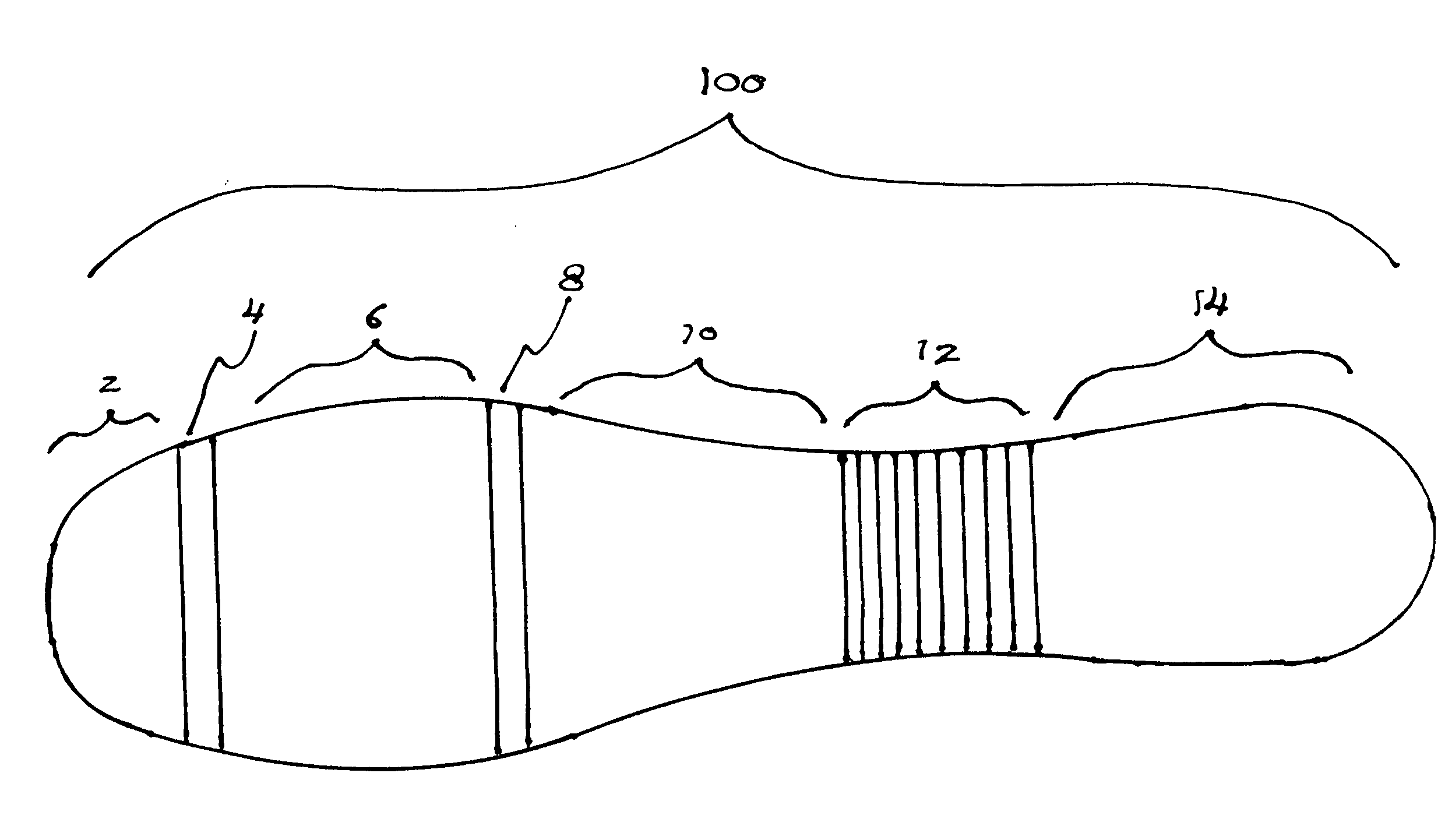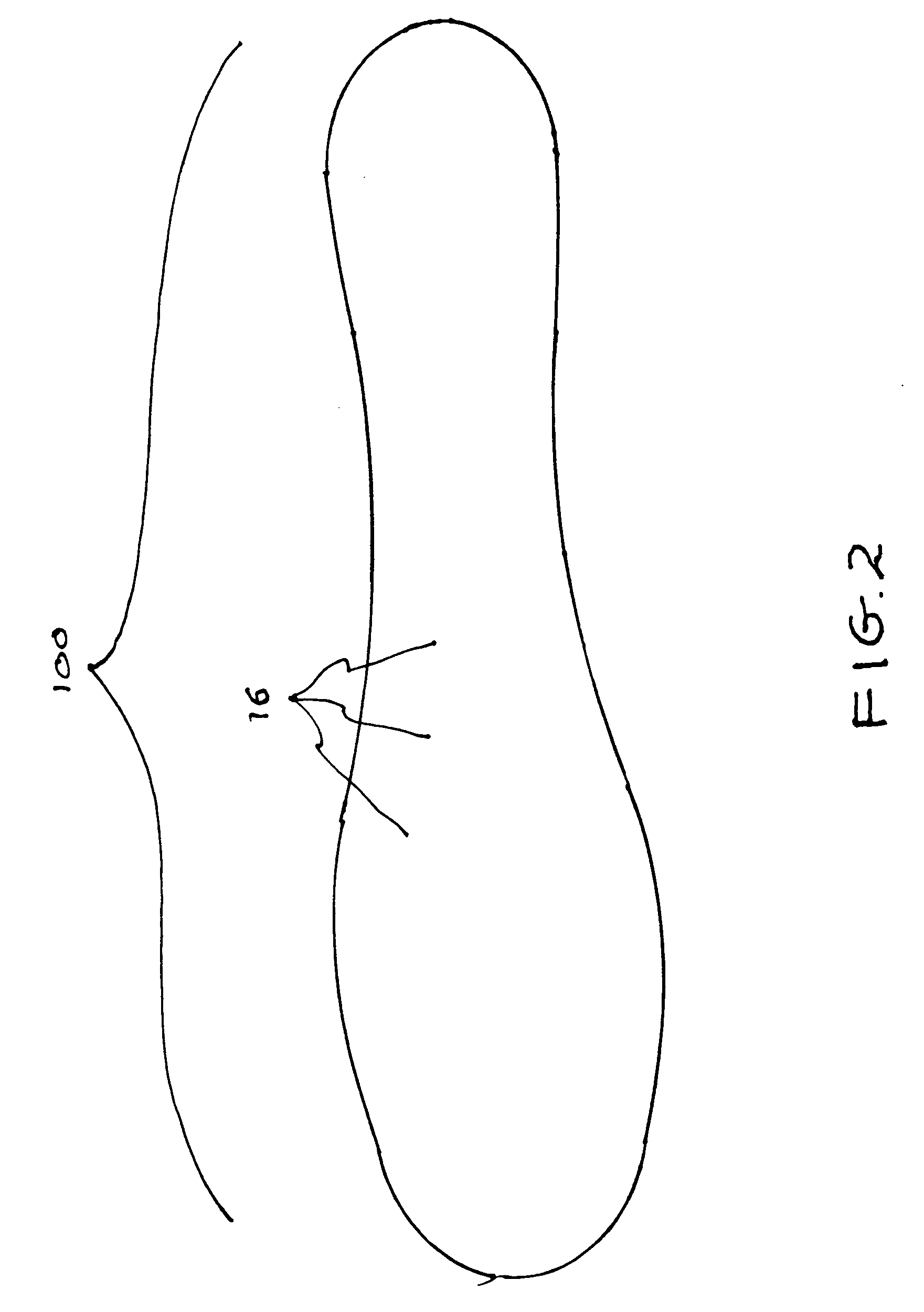Insole for a ballet slipper
a technology for ballet slippers and insoles, which is applied in the direction of uppers, bootlegs, stiffners, etc., can solve the problems of no intermediate articulation, no ballet slippers available on the market or in the patent literature that allow intermediate articulation, and children's difficulties in going from the flat position to the on pointe position
- Summary
- Abstract
- Description
- Claims
- Application Information
AI Technical Summary
Benefits of technology
Problems solved by technology
Method used
Image
Examples
Embodiment Construction
[0024]Detailed descriptions of the preferred embodiment are provided herein. It is to be understood, however, that the present invention may be embodied in various forms. Therefore, specific details disclosed herein are not to be interpreted as limiting, but rather as a basis for the claims and as a representative basis for teaching one skilled in the art to employ the present invention in virtually any appropriately detailed system, structure or manner.
[0025]Referring now to FIG. 1 we see a plan view of the bottom of the insole for ballet slippers of the present invention 100. The overall shape conforms generally to the perimeter of a human foot. However, it should be noted that standard ballet shoes are not specifically designed for a right foot and a left foot. This view shows the insole broken up into specific segments. Segments 2, 4, 10 and 14 are rigid in construction. First segment 2 is a rigid segment located at the Distal Phalanges region of the foot. First rib 4 is flexibl...
PUM
 Login to View More
Login to View More Abstract
Description
Claims
Application Information
 Login to View More
Login to View More - R&D
- Intellectual Property
- Life Sciences
- Materials
- Tech Scout
- Unparalleled Data Quality
- Higher Quality Content
- 60% Fewer Hallucinations
Browse by: Latest US Patents, China's latest patents, Technical Efficacy Thesaurus, Application Domain, Technology Topic, Popular Technical Reports.
© 2025 PatSnap. All rights reserved.Legal|Privacy policy|Modern Slavery Act Transparency Statement|Sitemap|About US| Contact US: help@patsnap.com



